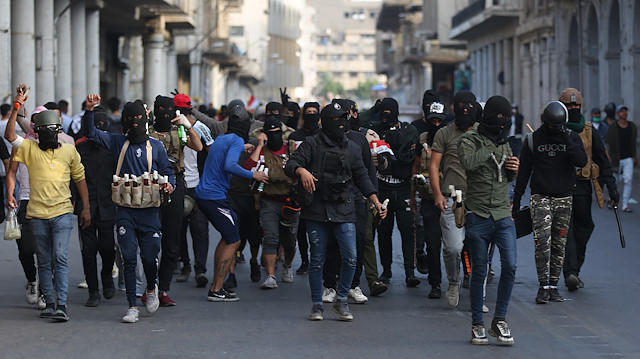
Millions of people filled streets across the globe in 17 countries from Asia to Europe, South America to the Middle East
Street protests across the world shook the year 2019, as mass demonstrations took place against corruption, inequality, alleged election rigging, price hikes.
According to data compiled by Anadolu Agency, millions of people filled the streets in 17 countries, from Asia to Europe and from South America to the Middle East. Hundreds lost their lives as still thousands were injured or detained.
- Asia
Protests in China's Hong Kong Special Administrative Region erupted in April after the submission of a bill allowing the extradition of suspects in the autonomous enclave to the Chinese mainland. Concerned that the bill may jeopardize their personal freedoms if enacted, democracy advocates took to the streets in protests that involved millions in June. Despite the withdrawal of the bill, at least five people were killed and more than 5,000 detained as peaceful demonstrations evolved into violence.
Students in Indonesia's major cities, especially the capital Jakarta, organized to protest corruption and new criminal law regulations. Five people lost their lives in the demonstrations.
In India, protests were held in December against the country's new citizenship law, which granted citizenship to six religious groups from Pakistan, Afghanistan, and Bangladesh, but was changed to exclude Muslim immigrants in the same circumstances.
In Russia, protests were held in the summertime following the cancellation of the registration of independent candidates wishing to participate in the Moscow City Council elections. Demonstrators continued street protests demanding the release of around 1,500 detainees, some of whom were handed long prison sentences.
- Europe
In France, Yellow Vest protests erupted in October last year, becoming one of the longest-running anti-government movements in the country's history against President Emmanuel Macron's controversial policies. Demonstrations left 11 protesters and police dead and more than 4,000 injured, according to the French government. At least some 8,400 people have been arrested since the beginning of the Yellow Vest protests, and 2,000 remanded in custody.
In November, over 200,000 people gathered in Czechia's capital Prague, demanding the resignation of Prime Minister Andrej Babis and Justice Minister Marie Benesova, over alleged corruption links.
Pro-independence demonstrators in Catalonia, Spain filled the streets in October after the Supreme Court sentenced nine Catalan politicians to prison.
- South America
After October elections in Bolivia, people in the capital La Paz held demonstrations against President Evo Morales for alleged electoral fraud. Morales resigned and moved to Mexico in November. At least 31 people lost their lives in protests across the country.
Protests in Chile began in the capital Santiago in response to proposed price hikes in subway fares. The demonstrations soon spread throughout the country. At least 22 people were killed and more than 2,000 protesters detained in demonstrations in which people expressed demands for income equality and access to quality health and education services.
The demonstrations in Colombia erupted in November due to a number of problems, including a lack of a national economic plan in the country, corruption and the killing of human rights activists. Approximately 300,000 people participated in the protests throughout the country, at least five people were killed and nearly 1,000 people injured.
In October, protests began in Ecuador after President Lenin Moreno put an end to fuel subsidies and austerity measures that cut civil servant salaries. Protests ended following an agreement reached by the Ecuadorian government and indigenous groups.
Protests began in Haiti's capital Port-au-Prince in February, demanding the resignation of President Jovenel Moise. Demonstrators also demanded a temporary government and the prosecution of corrupt officials. During demonstrations in the country, 40 people were killed and nearly 200 injured since September.
- Middle East
After Algerian President Abdelaziz Bouteflika announced that he would run again for a fifth term in February, around three million people went out onto the streets demanding the complete withdrawal of the Bouteflika regime. In power for 20 years, Bouteflika announced his resignation on April 2 as a result of massive demonstrations, with Abdelmadjid Tebboune becoming the country's new president on Dec. 12.
More than 4,000 people, including 11 journalists, were arrested in September amid protests in Egypt, where officials in the capital Cairo and other cities were accused of using public funds to obtain personal wealth.
Protests started in Iran when the government announced a 50% increase in gasoline prices in November. During the demonstrations, more than 140 demonstrators in 22 cities were killed and more than 1,000 people were detained in protests across the country.
Iraqis have been protesting since October against the government on allegations of corruption. According to government data, more than 350 people have been killed and nearly 1,000 injured in the street protests in Baghdad and southern Iraq.
In Lebanon, demonstrations began in October in response to the government's attempt to impose taxes on communications and, in particular, the social network WhatsApp. Prime Minister Saad al-Hariri announced his resignation as a result of demonstrations spreading across the country in a short period.


